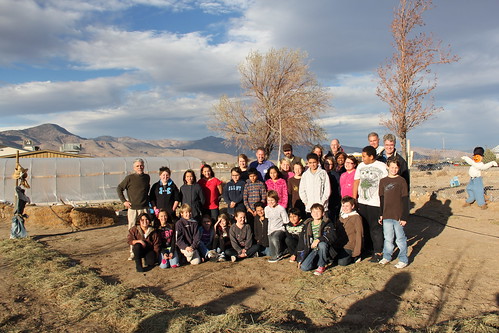
“Can a School Garden Supplement a Community’s Food Supply in a Sustainable Way?” That was the question asked by Bob Gardner’s fifth grade class at Dayton, Nevada, Elementary School on Tuesday as students presented their science projects to classmates and adult guests.
The Dayton Elementary School garden is one of several gardens funded with a USDA National Institute of Food and Agriculture grant to the Healthy Communities Coalition of Lyon and Storey Counties in northwestern Nevada. The school garden is a year-round project. Each year, students harvest the prior class crop, then over the winter, design the garden and in the spring plant and care for the next year’s crops. Harvested crops are sold at the local farmer’s market and donated to the local senior center near the school.
Students also use the school garden as a STEM lab which is an acronym for Science, Technology, Engineering, and Math. Students are divided into teams of five and each acts as a department like a business with teams on soil science, research, planning, procurement, repair, and distribution. Each team takes measurements and does research on space needed for specific crops, soil temperatures and best arrangement of crops for enhanced production, or for procurement and repair, develops cost estimates of need for seed, compost, hoses, etc.
At the class presentation Tuesday, students were remarkably professional, especially for 10-year old entrepreneurs. Each department presented its measurements, experiments, or research including a short video presentation, followed by questions and answers. The students showed their understanding of plants, how to make compost, how to design the garden, how to protect the crops from small animals, and how they planned to distribute food.
The students had some very good answers to the guest’s thought-provoking questions and were not afraid to say that they will have more answers as the project continues.
Besides being fun, Mr. Gardner’s fifth grade class has turned the Dayton Elementary School garden into a living learning laboratory.
To learn more about community gardening and the Know your Farmer, Know your Food initiative, click here.
